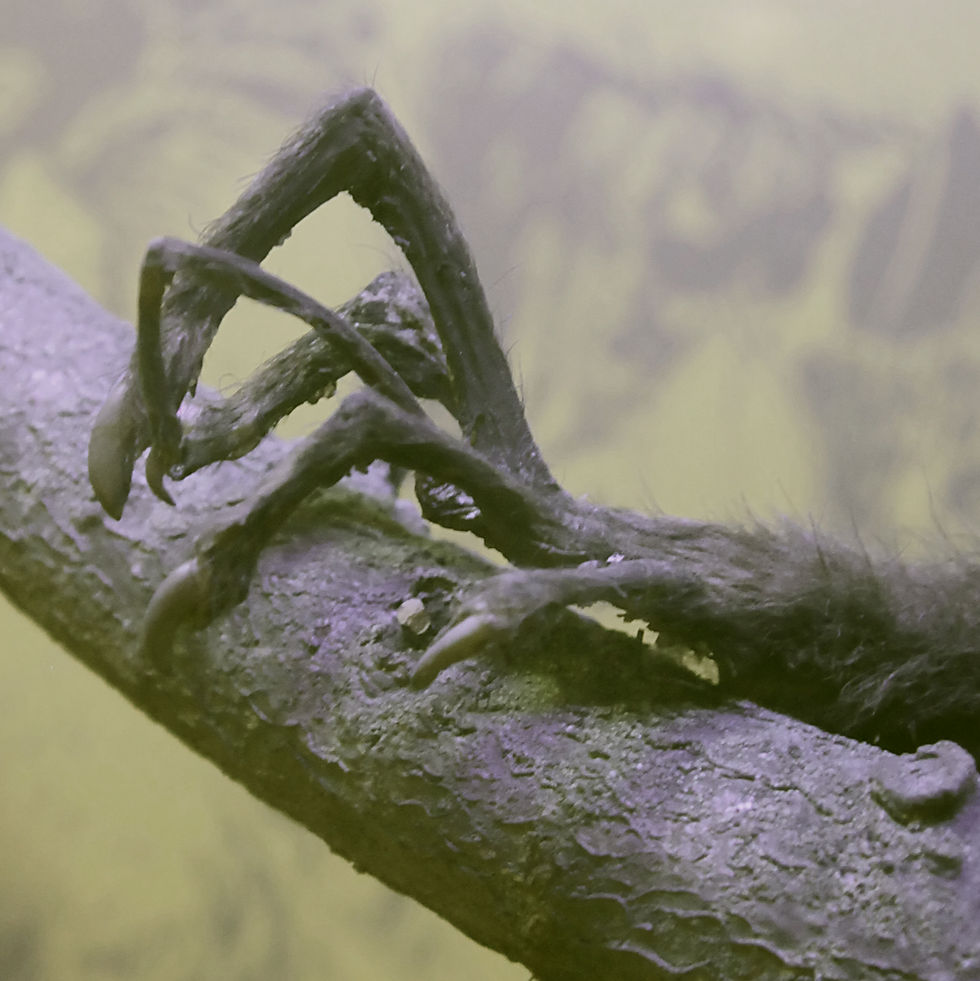CREEPS IN THE BRUSH
- BunjyWunjy
- Jul 8, 2018
- 2 min read
Hey everybody, Halloween is coming up fast so it’s time to get-
SPOoOoOKY-
again with a really absurdly creepy critter! This time, we’ll stick to one of the most bizarre creatures terra firma has to offer:


(It’s called that because it’s what you scream when you see one.)
The Aye-Aye is a nocturnal tree-dwelling mammal that lives in Madagascar. It is hailed to be one of the creepiest animals on the face of the planet, and rightly so. They grow to be a little over three feet long, every inch of which is packed to critical mass with weird.
In fact, they’re so mond-bogglingly weird that we’re not even entirely sure what they really are. Aye-Ayes are the only existing member of the family Daubentoniidae, which bears very strong resemblance to both rodents and primates. (Primate limbs, rodent teeth? What the heck, Aye-Aye.) Recent gene mapping suggests that the Aye-Aye is actually a lemur relative, but they’re SO AWESOMELY WEIRD that we just. don’t know for sure. It's lumped in with the lemurs for now. We’ll figure you out someday, Aye-Aye.
But as you may have noticed from these pictures, the aye-aye is also remarkable for giving evolution the finger.

(Yes, literally.)
It uses its massively over-proportioned birdflipper to hunt for grubs, tapping the tree with its larger fingers to locate the wiggly snacks and digging them out of soft tree bark with the thinnest middle finger. Like a woodpecker, except viscerally horrifying. For these reasons, and also because they are just generally upsetting to look at, Aye-Ayes are held by the residents of Madagascar to be cursed animals and are usually killed on sight. Unfortunately, because of this practice, these charismatic little creeps are now on the endangered list.
But while the Aye-Aye is currently in dangerous waters, conservation programs are underway. Several zoos host captive breeding programs to return Aye-Ayes to the wild, where they can go be as creepy as their little hearts desire.

(Which is lots! Lots of creepy.)
Also if you happen to go to Madagascar and you actually see one, y’know. Maybe don’t kill it. It is our hope that the Aye-Aye will continue on to really freak out many future generations of humans.
IMAGE SOURCES
1. Frank Vassen, Wikimedia Commons
2. Dr. Mirko Junge, Wikimedia Commons
3. Tom Junek, Wikimedia Commons

Comments